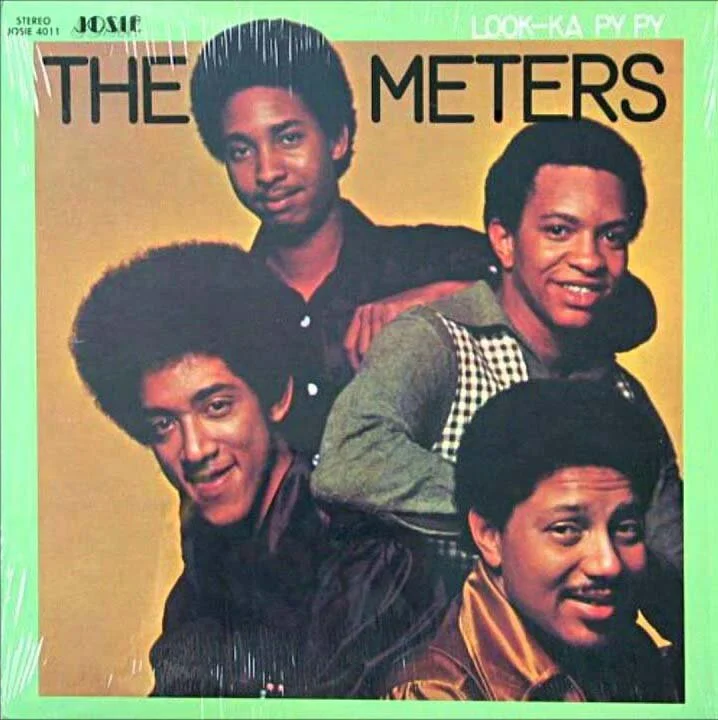In the previous lesson we worked with the bass drum and the 16th note patterns that are crucial to funk. It’s time to put some 16th notes on the snare drum. We’ll put some 16th note ghost notes in between those bass drum patterns to add another dimension to the groove.
1 - Ghost Notes – Introduction Video
Ghost notes are soft notes played on the snare drum, usually on the “e”s and “a”s (pronounced “ah”s) in the 16th note count. Most of the notes in a funk groove will fall on one of these 16 counts.
16th Note Count
Note: If the beat contains ANY 16th notes, it’s best to count the whole beat with the 16th note count. If the beat has only 8th notes then the 8th note count will do: 1 & 2 & 3 & 4 &. But if there are ANY 16ths, use the 16th note count and don’t change the count if one section of the bar has no 16ths.
Ghost note volume:
Think of it this way – someone is sitting in the concert hall balcony listening to the drums, groovin’ along with the bass drum and the backbeats. Then, as they listen more closely, they begin to hear something else which intrigues them. What’s that? they’re saying to themselves. What they’re hearing are the ghost notes in between the backbeats.
When I first heard them I was mystified, too. It’s something that makes the rhythm infectious. It sounds and feels so good you’ve got to dig deeper and figure out what’s going on.
2 - Two Examples
1.
2.
3 - Song Examples
A. Single Ghost Notes
1. “Gimme Some More” – The J.B.’s, Jab’o Starks, drums
Ghost notes on the “a of 2” and the “e of 3.”
Quiz 1
How long is the bridge to “Gimme Some More”?
- 2 bars
- 3 bars
- 4 bars
- 5 bars
Answer C: 4 bars
Quiz 2
Where is the kick in the bridge?
(Note: in the following terminology the “and of 1,” for example, means the “and” after “1”)
- "and of 1"
- "and of 2"
- "3"
- "and of 3"
- "and of 4"
Answer B: "and of 2"
2. “Gimme Some More – Live” – James Brown, Jab’o Starks, drums
I had to include this just to check out the difference between the studio and live versions.
3. “Pungee” – The Meters, Zigaboo Modeliste, drums
Ghost notes on the “e of 1”, “a of 2”, “e of 3”. These ghost notes are fairly loud, the “e of 3” especially. The “e of 3” and “4” is a typical SD lick used in a lot of funk.
4. “What’s Going On” – Marvin Gaye
Quiz 3
Where is the single ghost note in the beat to this song? There may be a few others and it’s hard to hear with the percussion going on, but what is the most frequent ghost note?
- "and of 1"
- "e of 1"
- "a of 1"
- "and of 2"
- "e of 2"
- "a of 2"
Answer F: "a of 2"
Marvin Gaye
B. Double Ghost Notes
1. “I Can’t Stand Myself (When You Touch Me)” – James Brown. “Sex Machine,” Live in Augusta, GA – Clyde Stubblefield, drums
Double ghost notes starting on the “ands” of beats 2 and 4.
2. “I’ve Got Money” – James Brown, Clayton Fillyau, drums.
Groove includes double ghost notes on the “ands” of beats 2 and 4.
In this early example of ghost note work, Clayton Fillyau plays a frantic groove. His ghost notes are fairly loud. I encourage students to play them much softer, as in the other examples, but this was such an important performance I had to include it here.
Clayton Fillyau
4 - Play-Along Video Workout Exercises
Watch the videos A & B below and play the exercises in them along with me. We can do this together and it’ll be a real workout. We’ll develop precision, good timing, and endurance, 3 things in one exercise! Not bad. Let’s play each line 4 x’s and go down the page.
A. Funk Drumming p. 70 & 71, 77 BPM
B. Funk Drumming p. 72 & 73, 77 BPM
80% of what the audience hears should still be the bass drum and the backbeats on “2” and “4.” You’ve got to add the softer ghost notes without disrupting the basic groove. When you can do that, you’ve got it!
5 - Video Groove Examples
Watch and play along to the videos 3.01 - 3.09 in Advanced Funk Drumming, p. 13 & 14. Check the transcriptions as well.
These videos show examples of beats with 16th note BD patterns that you can make up using the coordination you have learned from the exercises in Funk Drumming, p. 39-41.
The patterns are usually two-bar phrases which I then looped so that you’d have at least a minute to practice along with them.
6 - Funk Track Study
Groove 11, Slow, Tommy Igoe’s Groove Essentials 1.0, Hudson Music, p.42. See Required Materials section to purchase paperback or eBook.
The form of this song is simple, 8 and 16 bar sections. 8 and 16 bar sections are very common in popular music, but there will be songs, many songs, which have crucial figures and sections that occur in different places in the music, perhaps after 7 bars or 13 bars, and you have to know where these places are. This is where the counting comes in. KEEP COUNTING!!!!
Exercise
Download the mp3 of Groove 11, Slow, Tommy Igoe’s Groove Essentials 1.0, and look at the chart on p. 42.
Pick a very simple beat that fits the track of Groove 11, Slow, and practice your counting while playing along. We’ll use a funkier beat in the Workbook exercise below. It’s hard to play and count at the same time so we should start working on this with a simpler groove.
COUNT OUT LOUD!
For the first 8 bars it’s just drums and percussion. The other instruments come in one at a time as the chart progresses.
There are no fills indicated. Play simple fills and embellishments as you see fit to indicate where the different sections start. At least play a crash at the beginning of each section to keep your place. This doesn’t mean that you should always play a crash at the beginning of each section!!! This is just a practice tool for this song.
Workbook
1. Answer all the Quiz questions.
2. Funk Drumming, p. 72 & 73. Play each line 4x’s and go down the page. Go directly from one line to the next. Don’t forget the HH openings on the “and of 3”. Keep those ghost notes soft. Quarter note = 68 BPM. Use a metronome.
3. Play along to the track of Groove 11, Slow without drums. It has plenty of ghost notes and a good bass drum workout as well. See below for the beat to use.
a) COUNT OUT LOUD FOR FIRST 8 BARS, DON’T PLAY!!!
b) DON’T USE THE BEATS IN THE BOOK!
Use the following beat to play with the chart for Groove 11 Slow.
This beat is the type of beat we’ve been studying in this lesson.










